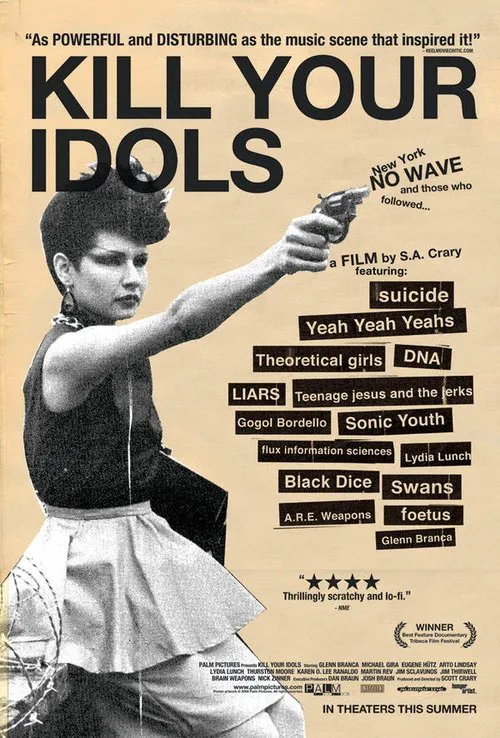Kill Your Idols

Plot
Kill Your Idols is a 2004 documentary that delves into the rich history of thirty years of alternative rock 'n roll in New York City. Director Curtis Paul Edwards takes the audience on a fascinating journey through the city's vibrant music scene, from the innovative spirit of No Wave to the present day. This film is not just a nostalgic trip down memory lane but also an exploration of how the city continues to breed new generations of musicians who boldly push the boundaries of the genre. The documentary begins by exploring the No Wave movement of the late 1970s and early 1980s. This avant-garde movement, which emerged in the city's underground clubs, rejected the commercialism of mainstream music. No Wave bands such as DNA, Teenage Jesus and the Jerks, and Lydia Lunch pioneered a new sound that combined elements of punk, art rock, and avant-garde music. They rejected traditional song structures and lyrics in favor of more experimental and improvisational approaches. The No Wave movement was characterized by its raw energy, anti-glam aesthetic, and willingness to challenge the status quo. As the documentary progresses, it moves on to the post-No Wave era, a period marked by the rise of Sonic Youth and their influence on the alternative rock scene. Formed in 1981, Sonic Youth pioneered a new sound that blended noise rock with elements of hardcore punk and art rock. Their innovative guitar tunings and feedback-laden sound revolutionized the genre and paved the way for future experimental rock bands. The film features interviews with Thurston Moore and Kim Gordon of Sonic Youth, who share their insights on the band's formative years and their early struggles to make a name for themselves in the music scene. Kill Your Idols also explores the 1980s post-punk and indie rock scene, which saw the emergence of bands such as The Feelies, The dBs, and Hüsker Dü. These bands, while not as overtly avant-garde as Sonic Youth, shared a similar DIY ethos and a desire to create music that was raw, honest, and uncompromising. They drew inspiration from art rock, post-punk, and noise rock, and their music reflected the uncertainty and disillusionment of the post- Reagan era. The documentary then shifts its focus to the present day, exploring the current generation of alternative rock bands that continue to represent New York City. Edwards talks to artists such as Thurston Moore, James Murphy of LCD Soundsystem, and Thurston's then partner at time with Kim from Sonic Youth now wife, Mac McCaughan of Superchunk, who all offer their perspectives on the evolution of the genre and its enduring relevance. These artists reflect on the current state of alternative rock, which has become increasingly fragmented and diversified. From the art rock of bands like Liars and Battles to the post-punk revival of the 2000s, the New York City music scene continues to push the boundaries of what is possible within the genre. Throughout Kill Your Idols, Edwards showcases archival footage, photographs, and interviews with various artists, musicians, and music journalists who have witnessed the evolution of alternative rock in New York City. He also incorporates live performances of these bands, which serve as a testament to their innovative spirit and the enduring power of their music. The film also provides context for the rise of alternative rock, highlighting the role of the city's clubs, such as CBGB's and the legendary Max's Kansas City, in fostering the careers of these musicians. One of the most striking aspects of Kill Your Idols is its willingness to challenge the notion of what "alternative" rock is. Edwards defies traditional categorizations and instead highlights the various ways in which these musicians have rejected mainstream conventions in favor of new sounds, styles, and ideas. By focusing on the city's avant-garde and underground scenes, the film reveals a rich tapestry of musical innovation and experimentation that has shaped the genre over the past three decades. Overall, Kill Your Idols is a vibrant and insightful portrait of New York City's alternative rock scene, which continues to pulsate with creative energy and innovation. By documenting the rise of various movements and styles, Edwards provides a profound sense of the genre's evolution and its ongoing relevance in the 21st century.
Reviews
Recommendations


